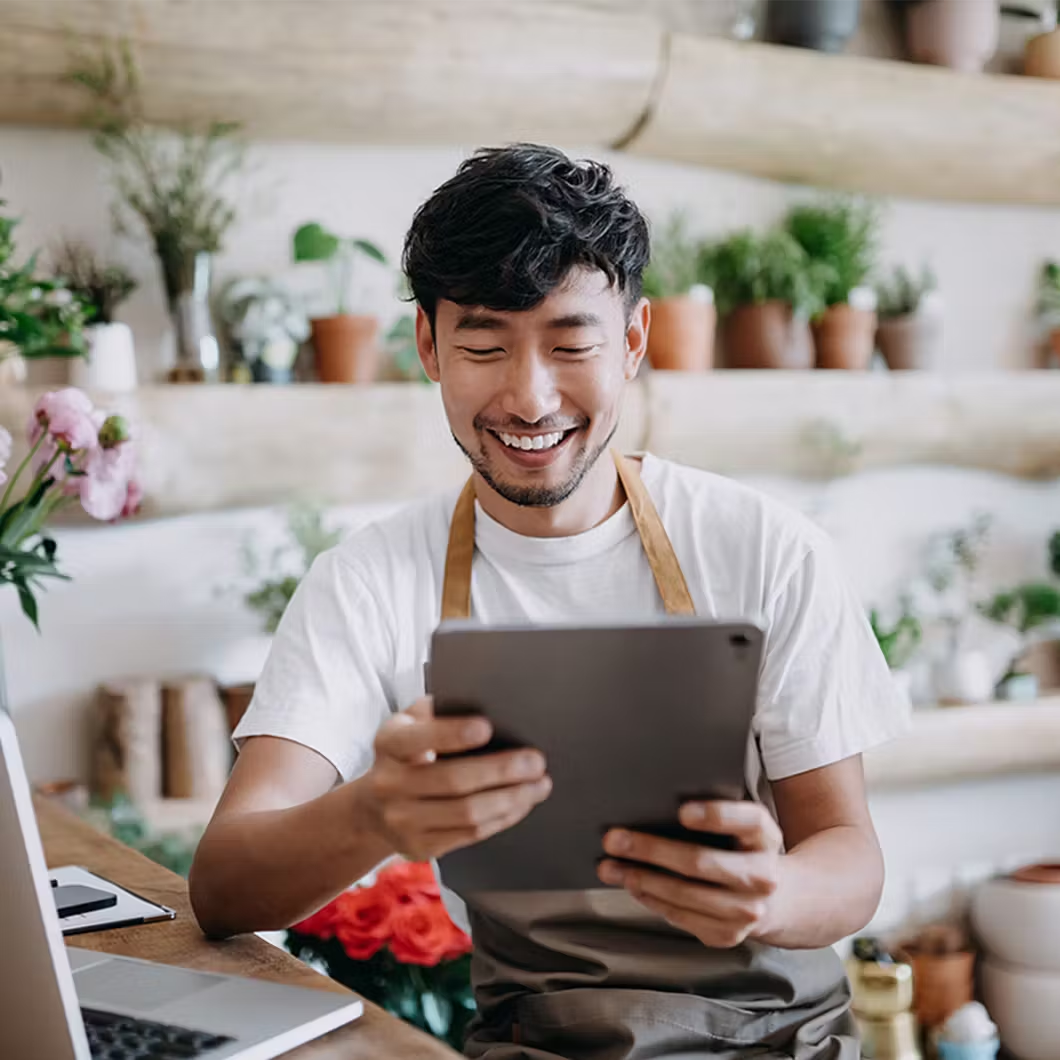Retail Choreography
Drive sales, loyalty, and productivity by choreographing outstanding customer experiences across channels.

What can Retail Choreography do for you?
Retail Choreography solutions help retailers and banks elevate CX by increasing convenience and delivering more tailored experiences. Customers of Verint Retail Choreography solutions have benefited from:
- 65% walkout reduction
- 52% wait time reduction
- 48% increase in conversion rate for customers with appointments
- 40% higher customer satisfaction
- 33% more average transaction value
- 5% overall increase in conversion rate
Want to know more about what Verint Retail Choreography can do for you?
Watch the WebinarWhat is Retail Choreography?
Verint Retail Choreography software solutions are an integral part of the Verint Open Platform, enabling CX Automation for retailers and bank branches. With our innovative solutions, you can create seamless customer experience across all your digital and physical communications channels to increase sales, loyalty, and productivity.
Verint Retail Choreography solutions include Verint:
- Appointment Booking – Acquire customers and increase conversion rates
- Queue Management – Retain walk-ins and increase spend
- Event Management – Boost brand loyalty
Retail Choreography solutions
The 2023 Verint Experience Index: Retail
After collecting more than 6,000 survey responses focusing on the top 25 US retailers, Amazon ranked top for both customer satisfaction (CSAT) and net promoter score (NPS). Get your copy of the report to find out where the rest of the retailers ranked and key insights to build a CX strategy that optimizes every customer interaction.
Read MoreRetail Choreography solutions
Appointment Booking
With Verint Appointment Booking, your customers can easily schedule appointments in your retail locations from any channel, including your website, mobile app, online ads, and social media pages. Simplifying the process of scheduling an appointment can improve a variety of metrics across your stores, including:
- Store/branch traffic
- Sales
- Customer loyalty
- Resource allocation
- Shop floor productivity
Queue Management
Retain walk-ins, increase customer spend, and boost loyalty with informed waiting experiences. Walk-in customers can easily join a virtual queue through your host, kiosk, QR code, or SMS, helping to manage customer expectations and provide a relaxed waiting experience.
With Queue Management, you can reduce store associate idle time and choreograph outstanding customer experiences in one place. Dashboards and reports show you who your customers are, why they visit, how long they wait to be served, and more.
Plus, state-of-the-art machine learning can use this data to predict future events and the staff needed to support them.
Event Management
Use Verint’s best-in-class enterprise Event Management software to drive sales and brand loyalty by making it easy for your customers to discover and register for in-person and virtual brand events, workshops and classes, including:
- Online events, webinars, and classes
- In-store classes and workshops
- VIP events and parties
- Community activities
- Private employee events
Task Management
Enhance retail excellence by enabling stores, regional managers and head office to seamlessly assign and track progress on tasks for associates to undertake. Verint Task Management enables you to improve communication, quality and effectiveness through better collaboration over work that needs completing such as:
- One-off tasks
- Daily recurring tasks
- Repeating checklists
- Visual merchandising tasks
- Compliance activities
BOPIS check-in
Drive customer loyalty with efficient order pickup from in your store, door side, or curbside. To make the process as simple as possible, your BOPIS (Buy Online, Pick up In-Store) Check-in customers can quickly check in when they arrive by phone, host or kiosk.
This check-in automatically notifies your store team when customers arrive so they can speed up order collection and exceed customer expectations.
BOPIS Check-in is a special retail use case of our Queue Management offering.
Learn how Currys uses BOPIS Check-inRetail Analytics
With Retail Analytics, you can unlock AI-driven insights on your customer experience and store operations. Verint captures 100 different data points on a single customer’s experience, including:
- Who visits your stores and why
- Which channels they used
- What was their experience like
Gain the insights needed to reduce operational costs and increase sales by capturing data across your shop floor, including time and motion insights, staff performance, customer wait times, and more.
Learn more about Retail AnalyticsRetail Ecosystem Integrations
The stand-alone value of our Retail Choreography applications is significant. But when our solutions are integrated with your existing retail software ecosystem, it becomes even more powerful. Advance your omnichannel experience, operations, and data by connecting into your ecosystem of tools, such as:
- In-store customer engagement platforms
- eCommerce
- BI & AI
- Telematics
- Marketing and social platforms
- And more
Customer case studies
This is a carousel with slides that do not auto-rotate. Use the Next and Previous buttons to navigate.
Related resources
This is a carousel with slides that do not auto-rotate. Use the Next and Previous buttons to navigate.
Frequently asked questions about Retail Choreography
Verint Retail Choreography software can help you manage and analyze what’s going on in your stores, bank branches, and contact centers. By optimizing customer experience and retail operations, these solutions can enable you to improve foot traffic, retention, spend, and productivity.
Customers today expect personalized omnichannel experiences when interacting with brands. With Verint Retail Choreography, you can transform your omnichannel strategy and engage customers seamlessly across communications channels (online, via social media and your physical stores). This can help you create powerful customer experiences, provide seamless operations, and capture data insights to drive revenue.
The main Verint Retail Choreography solutions include Appointment Booking, Queue Management, and Event Management. All these software solutions are easy to set up and used out-of-the-box, enabling you to quickly make changes to the interface without additional service support.